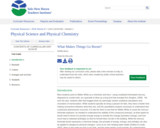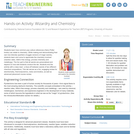
Most students point to Walter White as a chemistry anti-hero—using crystalized fulminated mercury, disguised as crystal meth, as a grenade to blow up a drug lord that wronged him. Explosions are engaging, exciting parts of chemistry, yet dangerous to society when unplanned, such as unexpected water heater explosions. This unit will look at the components that make reactions spontaneous and explosive, including energy, enthalpy, entropy, and how they apply to physical and chemical changes. Focus will be on quantifying reactions and phase changes and working on the match concepts connected to kinetics and thermodynamics. To keep students engaged with the complex mathematical components, students will be using each lesson as a way to research and explore exciting explosions, such as that in Breaking Bad, and water heater explosions, building a model of their understanding. After finalizing their model of explosions, students will then apply their model to a community issue, such as air-bag safety. Students will design a safe and effective airbag that incorporates multiple concepts from the unit, and includes quantifications to ensure their safety.
- Subject:
- Chemistry
- Physical Science
- Material Type:
- Lesson Plan
- Unit of Study
- Provider:
- Yale-New Haven Teachers Institute
- Provider Set:
- 2016 Curriculum Units Volume IV
- Date Added:
- 08/01/2016
